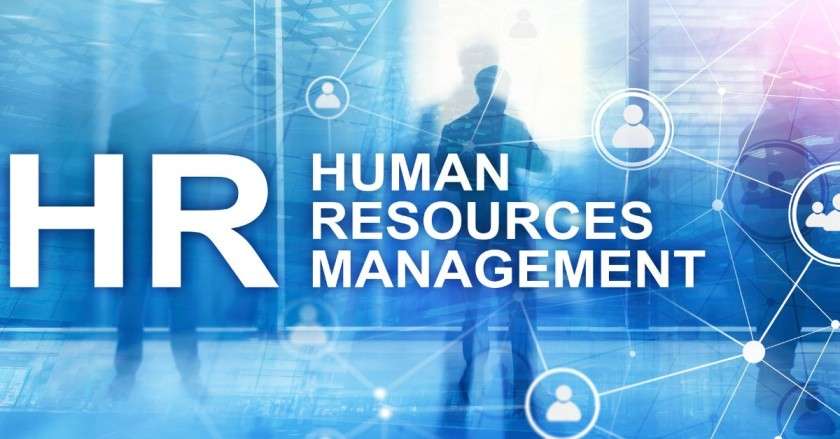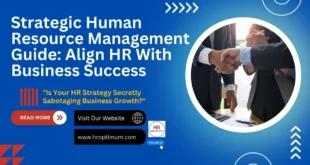Functions of Human Resource Management – A comprehensive guide covering talent acquisition, training & development, compensation, performance appraisals, diversity, analytics & more.
In the dynamic world of modern business, the role of human resource management (HRM) has become increasingly crucial. As organizations strive to navigate the complexities of talent acquisition, employee development, and regulatory compliance, a deep understanding of HRM’s core functions is essential for achieving sustainable growth and success. But have you ever wondered, what are the true capabilities of HRM, and how can it transform an organization’s workforce?
This comprehensive guide delves into the functions of human resource management, exploring the critical areas that HR professionals oversee, from talent acquisition and employee training and development to compensation and benefits management, performance appraisal, labour relations, workplace diversity, HR analytics, HR information systems, and compliance and risk management. By understanding the breadth and depth of HRM’s responsibilities, you’ll gain valuable insights into how this dynamic function can empower organizations to unlock their full potential.
Key Takeaways
- Human Resource Management (HRM) plays a crucial role in managing an organization’s most valuable asset – its people.
- The functions of HRM cover a wide range of critical areas, including talent acquisition, employee development, compensation, compliance, and more.
- HRM’s responsibilities contribute to the overall success and growth of a business by ensuring the right people, with the right skills, are in the right places at the right time.
- Exploring the comprehensive guide on the functions of HRM can provide valuable insights into how this dynamic function can transform an organization’s workforce.
- Understanding the key roles and responsibilities of HR professionals can help organizations leverage HRM to achieve their strategic goals and objectives.
Introduction to Human Resource Management
Human Resource Management (HRM) is the function within an organization that focuses on the management and development of the company’s most valuable asset – its employees. HRM plays a critical role in ensuring that an organization has the right people, with the right skills, in the right places, at the right time to achieve its strategic goals and objectives.
Importance of Human Resource Management
The importance of human resource management cannot be overstated. HRM is responsible for attracting, developing, and retaining the best talent to drive the organization’s success. By effectively managing the human resources of a company, HRM contributes to areas such as workforce planning, employee engagement, and performance management – all of which are crucial for maintaining a competitive edge in the market.
Key Roles and Responsibilities of HR
The key roles and responsibilities of HR professionals include, but are not limited to, the following:
- Talent acquisition and recruitment
- Employee training and development
- Compensation and benefits administration
- Performance management and appraisals
- Labor relations and compliance
- Workforce planning and forecasting
- Employee engagement and retention strategies
By effectively executing these HR management functions, organizations can build a highly skilled, motivated, and adaptable workforce that can drive sustainable growth and success.
Talent Acquisition and Recruitment
One of the core functions of Human Resource Management is talent acquisition and recruitment. This involves the process of attracting, selecting, and hiring the best-qualified candidates to fill the organization’s job openings and meet its workforce needs.
Job Analysis and Role Descriptions
Before sourcing and attracting talent, HR professionals conduct a thorough job analysis to understand the specific requirements and responsibilities of each role within the organization. This information is then used to create detailed role descriptions that outline the necessary skills, experience, and qualifications for the position. Accurate job analysis and role descriptions are crucial for identifying the right talent and ensuring a successful hiring process.
Sourcing and Attracting Top Talent
With a clear understanding of the desired candidate profile, HR teams then focus on sourcing and attracting top talent from the job market. This may involve a range of recruitment strategies, such as leveraging the organization’s website and social media channels, collaborating with professional associations and industry networks, and partnering with specialized recruitment agencies. The goal is to build a diverse and qualified pool of candidates who can contribute to the organization’s success.
Interviewing and Selection Processes
Once a pool of qualified candidates has been identified, HR professionals design and implement robust interviewing and selection processes to assess their suitability for the role. This may include a combination of behavioral interviews, skills assessments, reference checks, and other evaluation methods. The objective is to identify the candidate who best aligns with the organization’s values, culture, and job requirements, ensuring a successful hire that drives long-term performance and growth.
Employee Training and Development
At the heart of Human Resource Management lies a critical function: employee training and development. This encompasses a range of programs and initiatives designed to help employees acquire new skills, enhance their performance, and advance their careers within the organization.
Onboarding and Orientation Programs
Effective onboarding and orientation programs play a vital role in employee training and development. These initiatives help new hires quickly integrate into the company culture, understand their roles and responsibilities, and develop the necessary skills to succeed in their positions. Well-designed onboarding programs can significantly improve employee retention and productivity, ultimately contributing to the organization’s long-term success.
Continuous Learning and Skill Development
In today’s rapidly evolving business landscape, continuous learning and skill development are essential for employees to stay competitive and relevant. Human Resource Management teams work closely with employees to identify their training needs, develop comprehensive learning plans, and provide access to a variety of learning opportunities, such as workshops, online courses, and on-the-job training. By investing in their employees’ growth, organizations can foster a culture of continuous improvement and ensure that their workforce is equipped to meet the challenges of the future.
Leadership and Management Training
Leadership and management training is a crucial component of employee development programs. HR teams collaborate with senior leaders to design and implement targeted training initiatives that help cultivate the next generation of organizational leaders. These programs focus on developing essential skills, such as strategic decision-making, effective communication, conflict resolution, and people management, equipping employees with the tools they need to thrive in leadership roles and drive the company’s success.
Functions of Human Resource Management
The functions of Human Resource Management encompass a wide range of responsibilities that are critical to the success and growth of an organization. Beyond talent acquisition and employee development, HR professionals play a crucial role in various aspects of workforce management, including workforce planning and forecasting, employee engagement and retention strategies, and performance management and appraisals.
Workforce Planning and Forecasting
Effective workforce planning and forecasting is essential for ensuring that an organization has the right number of employees with the necessary skills and expertise to meet its current and future business needs. This involves analyzing workforce data, identifying potential gaps or surpluses, and developing strategies to align the workforce with the organization’s strategic objectives.
Employee Engagement and Retention Strategies
Maintaining a highly engaged and motivated workforce is a critical function of Human Resource Management. HR professionals are responsible for implementing employee engagement and retention strategies that foster a positive work environment, enhance job satisfaction, and reduce employee turnover. This may include developing recognition programs, implementing flexible work arrangements, and providing opportunities for professional development and career advancement.
Performance Management and Appraisals
The performance management and appraisal process is another crucial function of Human Resource Management. This involves setting clear performance goals, regularly reviewing employee progress, and providing constructive feedback to help employees improve their skills and contributions to the organization. Effective performance management can also inform decisions related to compensation, promotions, and employee development.
| Function | Description | Key Objectives |
|---|---|---|
| Workforce Planning and Forecasting | Analyzing workforce data, identifying potential gaps or surpluses, and developing strategies to align the workforce with the organization’s strategic objectives. |
|
| Employee Engagement and Retention Strategies | Implementing programs and initiatives that foster a positive work environment, enhance job satisfaction, and reduce employee turnover. |
|
| Performance Management and Appraisals | Setting clear performance goals, regularly reviewing employee progress, and providing constructive feedback to help employees improve their skills and contributions to the organization. |
|
Compensation and Benefits Administration
Compensation and benefits administration is another crucial function of Human Resource Management. This involves the design, implementation, and management of an organization’s compensation and benefits packages, including pay structures, incentive programs, and employee benefits.
Salary Benchmarking and Job Evaluations
To ensure competitiveness in the job market and internal equity, HR professionals often conduct salary benchmarking studies to compare an organization’s compensation levels with those of similar roles in the industry. Additionally, they perform job evaluations to assess the relative value and responsibilities of each position within the company, helping to establish appropriate pay ranges and structures.
Designing Competitive Benefits Packages
Beyond base salaries, HR also plays a significant role in crafting comprehensive benefits packages that attract and retain top talent. This may include a range of offerings such as health insurance, retirement plans, paid time off, and other perks that meet the evolving needs and preferences of the workforce.
Labor Relations and Compliance
As a vital function of Human Resource Management, labor relations and compliance involve the intricate management of an organization’s relationships with its employees, labor unions (if applicable), and the government. This critical area ensures adherence to relevant labor laws and regulations, while also fostering productive union relationships and maintaining a safe, risk-managed workplace.
Labor Laws and Regulations
Navigating the complex landscape of labor laws and regulations is a key responsibility of HR professionals. This includes staying up-to-date with continually evolving labor legislations, such as those related to minimum wage, overtime pay, discrimination, and employee rights. Ensuring strict compliance with these laws is crucial to avoid legal disputes and protect the organization’s reputation.
Collective Bargaining and Union Relationships
In organizations with labor unions, HR plays a central role in collective bargaining negotiations and maintaining positive union relationships. This involves understanding the union’s concerns, facilitating open communication, and negotiating fair contracts that balance the interests of both the employer and employees. Effective management of these union relationships is essential for maintaining labor peace and avoiding disruptive work stoppages.
Workplace Safety and Risk Management
Promoting a safe and healthy work environment is another vital aspect of labor relations and compliance. HR professionals work closely with cross-functional teams to identify and mitigate potential workplace risks, implement robust safety protocols, and ensure compliance with Occupational Safety and Health Administration (OSHA) regulations. By proactively managing workplace safety, organizations can protect their employees, avoid costly accidents and legal liabilities, and foster a positive, productive work culture.
| Labor Relations and Compliance Responsibilities | Key Focus Areas |
|---|---|
| Compliance with Labor Laws and Regulations |
|
| Collective Bargaining and Union Relationships |
|
| Workplace Safety and Risk Management |
|
Conclusion
As we conclude this comprehensive guide on the functions of human resource management, it’s clear that HRM plays a pivotal role in shaping the success and growth of an organization. From the critical responsibilities of talent acquisition and employee development to the intricate aspects of compensation, compliance, and labor relations, the various functions of HRM work in tandem to create a high-performing, engaged, and adaptable workforce.
The key takeaways from this guide on the functions of human resource management are the vital importance of effectively managing an organization’s most valuable asset – its people. By streamlining processes, fostering employee growth, and ensuring regulatory compliance, HR professionals can help organizations navigate the ever-evolving business landscape and achieve their strategic goals.
Whether you’re an HR practitioner, a business leader, or simply someone interested in understanding the comprehensive role of human resource management, this guide has provided a thorough overview of the key functions and responsibilities that contribute to the overall success of an organization. By leveraging these insights, you can better appreciate the holistic approach that HRM brings to the table and the pivotal impact it can have on your organization’s performance and long-term sustainability.
FAQ
What are the key functions of Human Resource Management?
The key functions of Human Resource Management include talent acquisition and recruitment, employee training and development, workforce planning and forecasting, employee engagement and retention strategies, performance management and appraisals, compensation and benefits administration, and labour relations and compliance.
Why is Human Resource Management important for an organization?
Human Resource Management is critical for an organization because it focuses on managing and developing the company’s most valuable asset – its employees. HRM ensures that an organization has the right people, with the right skills, in the right places, at the right time to achieve its strategic goals and objectives.
What are the key roles and responsibilities of the HR department?
The key roles and responsibilities of the HR department include talent acquisition and recruitment, employee training and development, workforce planning, employee engagement and retention, performance management, compensation and benefits administration, labour relations, and compliance with relevant laws and regulations.
How does the talent acquisition and recruitment process work?
The talent acquisition and recruitment process involves job analysis and role descriptions, sourcing and attracting top talent, and implementing effective interviewing and selection processes to identify the best-qualified candidates to fill the organization’s job openings.
What are the main components of employee training and development?
The main components of employee training and development include onboarding and orientation programs, continuous learning and skill development opportunities, and leadership and management training to help employees acquire new skills, enhance their performance, and advance their careers within the organization.
How does Human Resource Management handle compensation and benefits administration?
HR’s compensation and benefits administration functions include salary benchmarking and job evaluations, designing competitive benefits packages, and managing the organization’s pay structures and incentive programs to attract, motivate, and retain top talent.
What is the role of HR in labour relations and compliance?
The HR department’s labour relations and compliance functions involve managing the organization’s relationships with employees and labor unions (if applicable), ensuring compliance with relevant labour laws and regulations, and maintaining workplace safety and risk management protocols.
Thank You for Reading!
Thank you for taking the time to read our blog on Human Resource Management. We hope you found the information valuable and insightful. Your commitment to improving HR practices and creating a better workplace environment is commendable, and every step you take towards enhancing HR management makes a significant difference.
If you enjoyed this post and found it helpful, please share it with your colleagues and network to spread awareness about the importance of effective Human Resource Management. Don’t forget to subscribe to our newsletter for more tips, insights, and updates on the latest trends in HR. Let’s work together to create a more efficient, productive, and positive workplace for everyone!
If you have any questions, need further information, or would like to discuss how to enhance HR practices in your organization, please feel free to contact us. We’re here to help and support you in any way we can.
Stay informed, stay proactive!
 Hroptimum Leading to Success
Hroptimum Leading to Success






